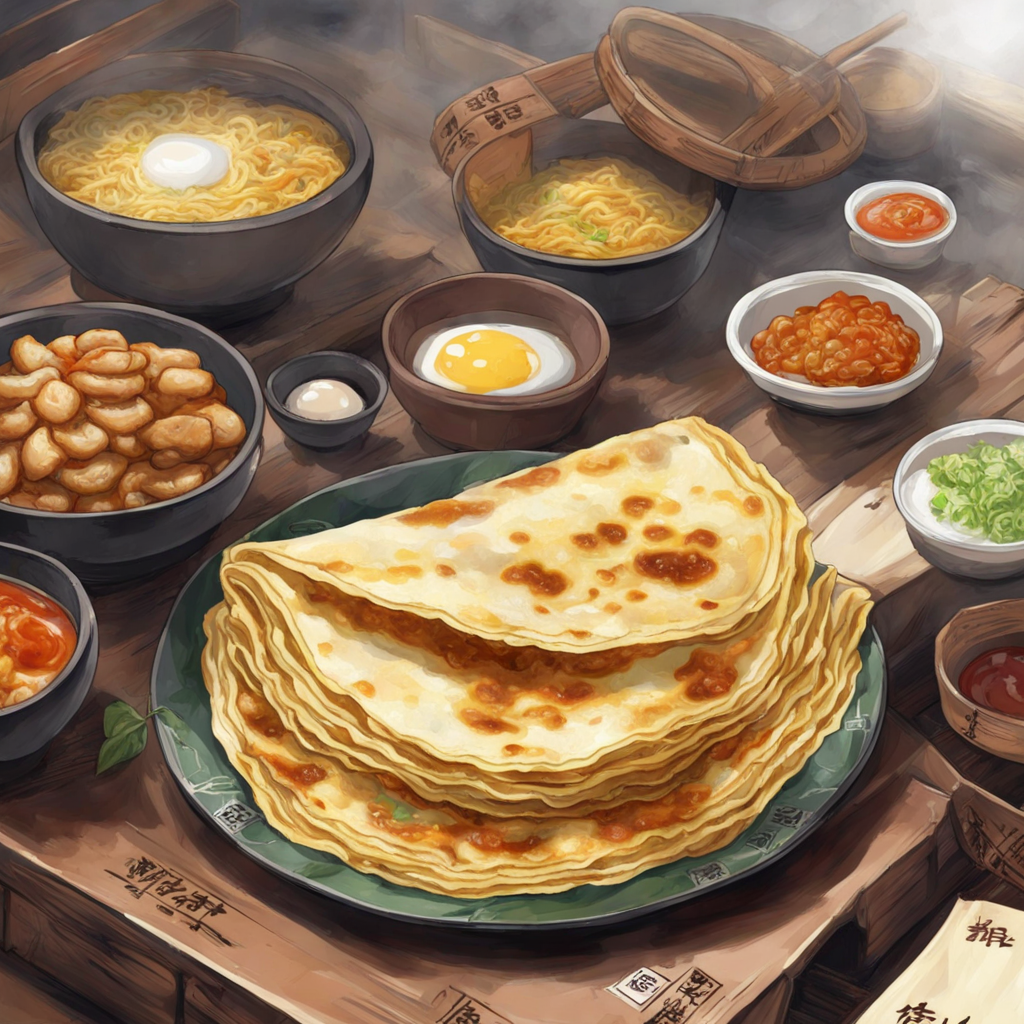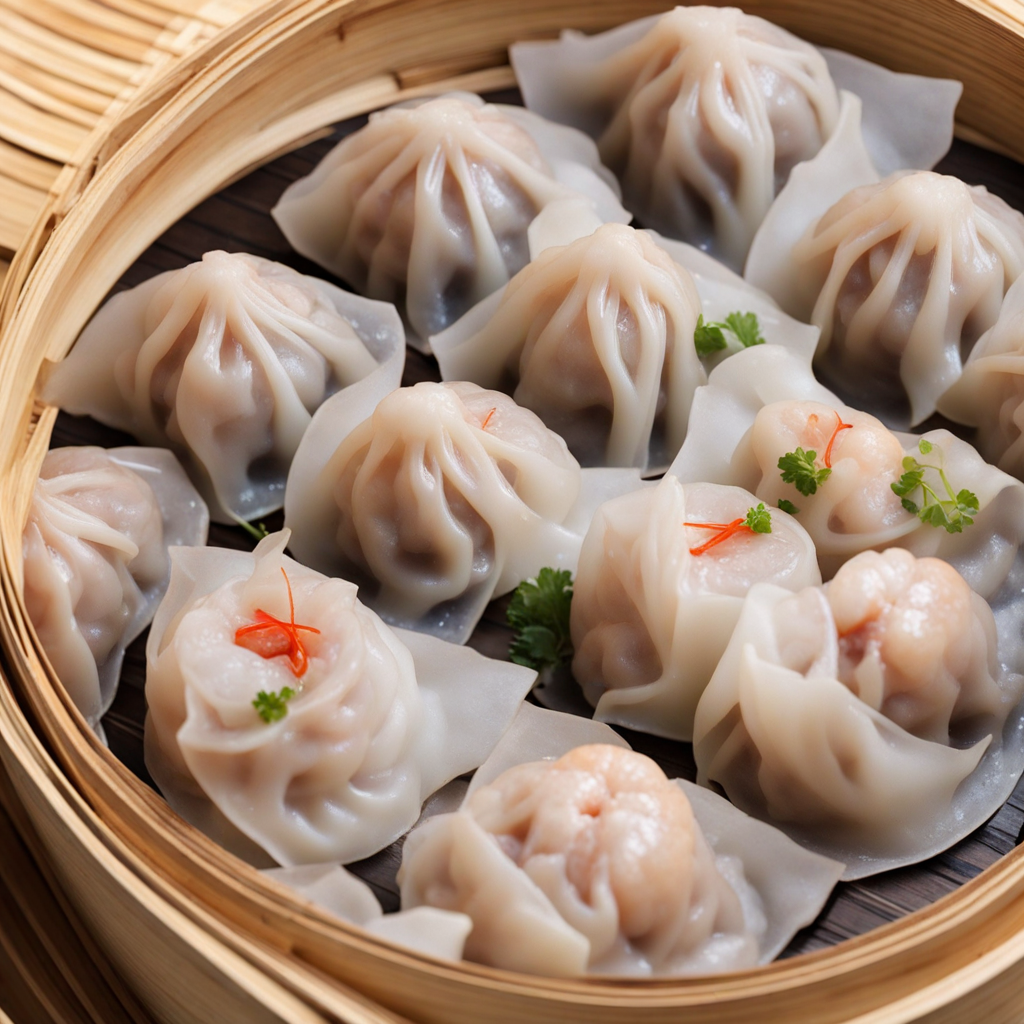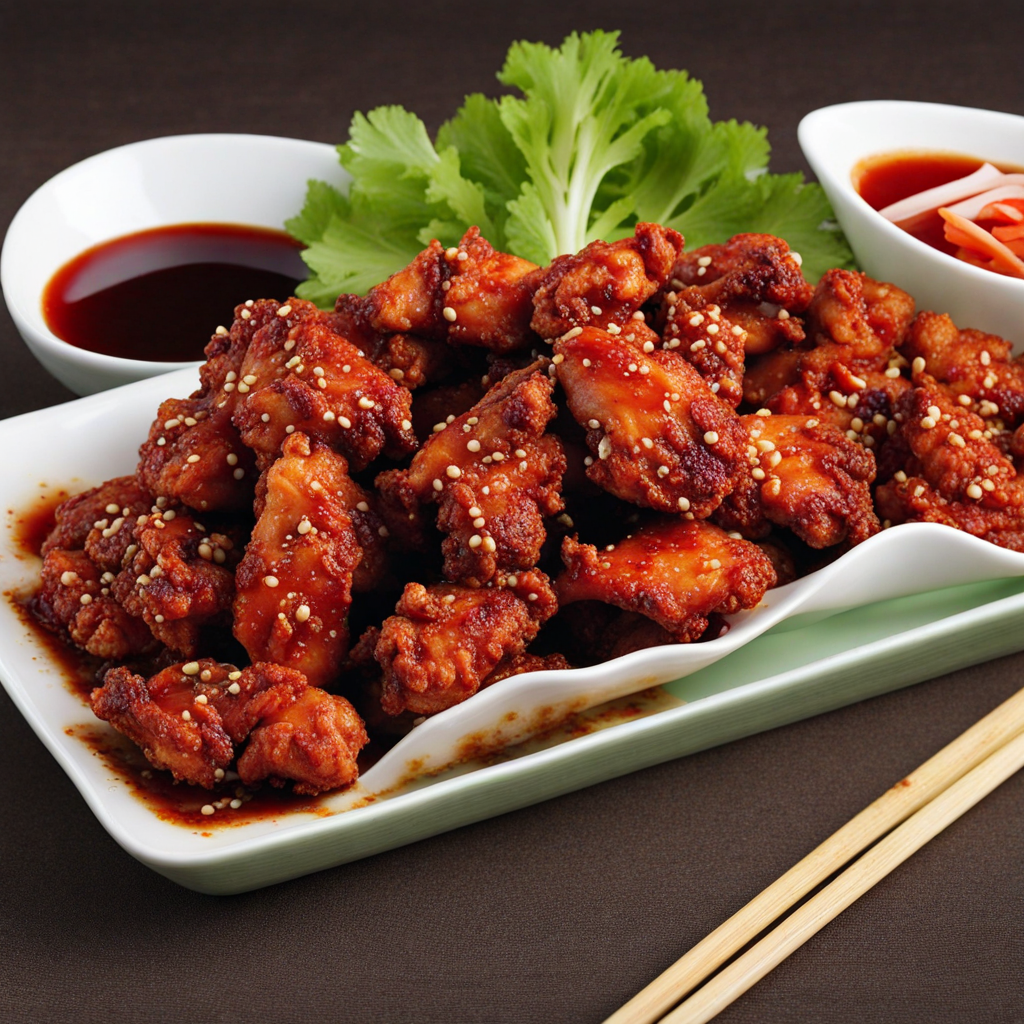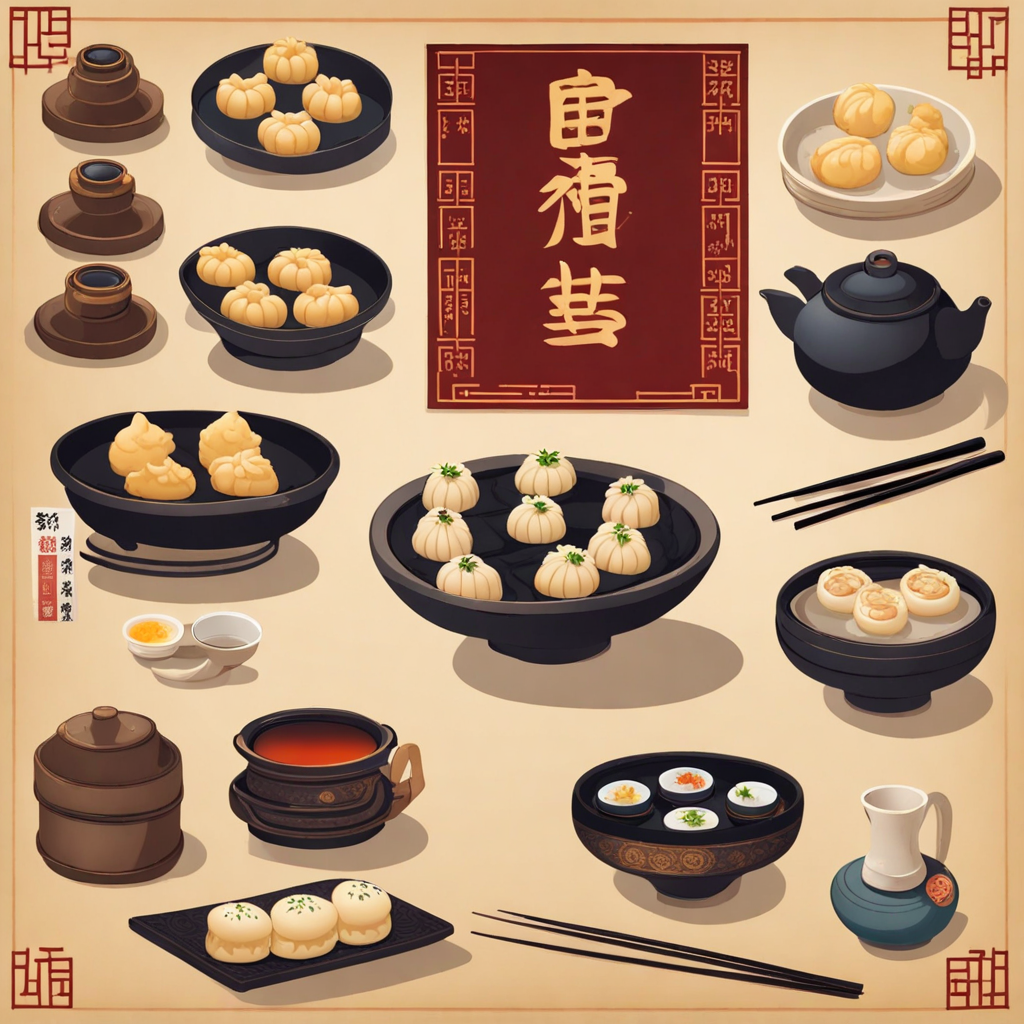Xiao Long Bao
Xiao Long Bao, often referred to as soup dumplings, is a delightful culinary creation hailing from the Jiangsu province of China, particularly associated with the city of Shanghai. These delicate dumplings are crafted from a thin, translucent wheat flour skin that encases a savory filling, typically made from minced pork, though variations can include crab meat or a mix of seafood. The magic lies in the preparation, where aspic (a gelatinous broth) is added to the filling before the dumplings are steamed. As the dumplings cook, the aspic melts, creating a flavorful soup that bursts forth with each bite, offering a unique and exhilarating culinary experience. The texture of Xiao Long Bao is a harmonious blend of soft and chewy, with the outer skin being thin yet sturdy enough to hold the delicious filling. Diners often enjoy these dumplings with a dipping sauce made from soy sauce, vinegar, and sometimes a hint of ginger, which enhances the flavor profile. The steaming process not only cooks the dumplings to perfection but also imparts a warm, comforting aroma that tantalizes the senses. Eating these dumplings requires a bit of finesse; they are typically enjoyed with chopsticks, and a common practice is to gently place one on a spoon, allowing the broth to cool slightly before taking a bite. Xiao Long Bao is more than just food; it's an experience that embodies the art of Chinese cuisine. Often served in bamboo steamers, these dumplings are a staple in dim sum restaurants and are celebrated for their intricate preparation and the skill required to make them. The combination of the soft skin, the rich broth, and the umami-packed filling creates a symphony of flavors that reflects the culinary heritage of China. Whether enjoyed as a snack or part of a larger meal, Xiao Long Bao offers a taste of tradition and innovation that is sure to leave a lasting impression on any food lover.
How It Became This Dish
The Engaging History of 小笼包 (Xiaolongbao) #### Origins The story of 小笼包 (xiaolongbao), a delicate steamed bun filled with savory broth and meat, can be traced back to the Jiangnan region of China, particularly to Shanghai and its neighboring areas. The name “xiaolongbao” translates to “small basket bun,” which reflects both its size and the traditional method of steaming these dumplings in bamboo baskets. The earliest records of xiaolongbao date back to the late Qing Dynasty, around the 19th century, although the precise origins remain somewhat murky. Many food historians believe that they were inspired by the earlier jiaozi (dumplings) and baozi (stuffed buns) that have been enjoyed in China for centuries. The creation of xiaolongbao is often attributed to the famous restaurant “Nanxiang Steamed Bun Restaurant” in the town of Nanxiang, which is located in the outskirts of Shanghai. The restaurant originally served traditional baozi, but its chefs innovated by incorporating a flavorful broth into the filling, creating a new culinary sensation. #### Cultural Significance Xiaolongbao is not merely a food item; it carries cultural significance that extends beyond its delicious taste. In Chinese culture, food is deeply intertwined with social customs, and xiaolongbao plays a vital role in gatherings, celebrations, and even everyday meals. The dish represents the artistry of Chinese cuisine, where the mastery of dough-making and filling preparation reflects a chef's skill and dedication. In Shanghai, xiaolongbao is often enjoyed as part of breakfast or as a snack during the day. It can be found in street stalls, upscale restaurants, and everything in between, showcasing its accessibility and popularity. The dish is typically served with a dipping sauce made from soy sauce, vinegar, and ginger, enhancing the flavor and allowing diners to personalize their experience. Moreover, xiaolongbao has become a symbol of Shanghainese cuisine and, by extension, of Chinese culinary culture as a whole. The dish has garnered international acclaim, representing the rich culinary tradition of China to an audience far beyond its borders. It is often featured in cultural festivals, food fairs, and culinary showcases, serving as both a point of pride and a delicious ambassador for Chinese cuisine. #### Development Over Time The evolution of xiaolongbao is a fascinating journey through time. As the dish gained popularity, variations began to emerge, reflecting regional flavors and techniques. The original recipe, which typically included pork as the main filling, evolved to include a variety of meats, including crab, chicken, and even vegetarian options. This adaptability has allowed xiaolongbao to remain relevant in the ever-changing landscape of food preferences and dietary restrictions. In the early 20th century, xiaolongbao began to spread beyond Shanghai. As people migrated to different parts of China and around the world, they brought their culinary traditions with them. This led to the establishment of xiaolongbao shops in cities such as Beijing, Hong Kong, and even global metropolises like New York and San Francisco. Each location adapted the recipe to local tastes, resulting in a rich tapestry of xiaolongbao variations. For instance, in Taiwan, the dumplings are often larger and may contain a wider variety of fillings, including seafood. The 21st century marked a significant turning point for xiaolongbao, as it began to attract attention from food critics and enthusiasts worldwide. The dish has been featured in numerous food documentaries, travel shows, and culinary competitions, showcasing its unique preparation process and delectable taste. Social media platforms, particularly Instagram and TikTok, have played a pivotal role in popularizing xiaolongbao among younger generations, turning it into a food trend that captures the imaginations (and appetites) of food lovers globally. #### The Art of Making Xiaolongbao What truly sets xiaolongbao apart is the intricate process involved in its preparation. A skilled chef must master the art of dough-making, ensuring the skin is thin yet resilient enough to hold the broth without breaking. The filling, traditionally made from finely minced pork mixed with seasonings and gelatin, is crucial. The gelatin melts during steaming, creating the signature soup that fills each dumpling. The folding technique is equally important; chefs often employ a unique skill of pleating the dough to create a beautiful and secure closure. The traditional number of folds can vary, but it typically ranges from 18 to 20 pleats, showcasing the chef's craftsmanship. This attention to detail is what elevates xiaolongbao from a simple dish to an exquisite culinary experience. #### Global Influence and Future Directions As xiaolongbao continues to gain international popularity, chefs and restaurateurs are experimenting with the dish, blending traditional techniques with modern twists. Innovative fillings have emerged, ranging from truffle-infused pork to spicy Sichuan versions, catering to diverse palates. Culinary fusion has led to the creation of xiaolongbao-inspired dishes, such as “soup dumplings” in fusion restaurants, further expanding its appeal. The rise of food tourism has also played a significant role in the future of xiaolongbao. Culinary enthusiasts traveling to China seek authentic experiences, often including xiaolongbao as a highlight of their culinary journeys. Cooking classes centered around making xiaolongbao have become popular, allowing participants to engage with the culture in a hands-on manner while learning the techniques behind this beloved dish. As xiaolongbao continues to evolve, it remains a testament to the richness of Chinese culinary heritage. The dish embodies the intersection of tradition and innovation, a delicious narrative of cultural exchange that transcends borders. Whether enjoyed in a bustling Shanghai restaurant or a cozy eatery in a distant city, xiaolongbao serves as a reminder of the power of food to connect people and cultures, celebrating the shared joy of a well-crafted meal. In conclusion, xiaolongbao is more than just a steamed bun; it is a symbol of culinary artistry and cultural significance. Its journey from the humble streets of Shanghai to the global stage is a testament to its enduring appeal and the universal love for good food. As it continues to adapt and thrive, xiaolongbao will undoubtedly remain a cherished dish for generations to come, inviting all to savor its exquisite flavors and rich history.
You may like
Discover local flavors from China







